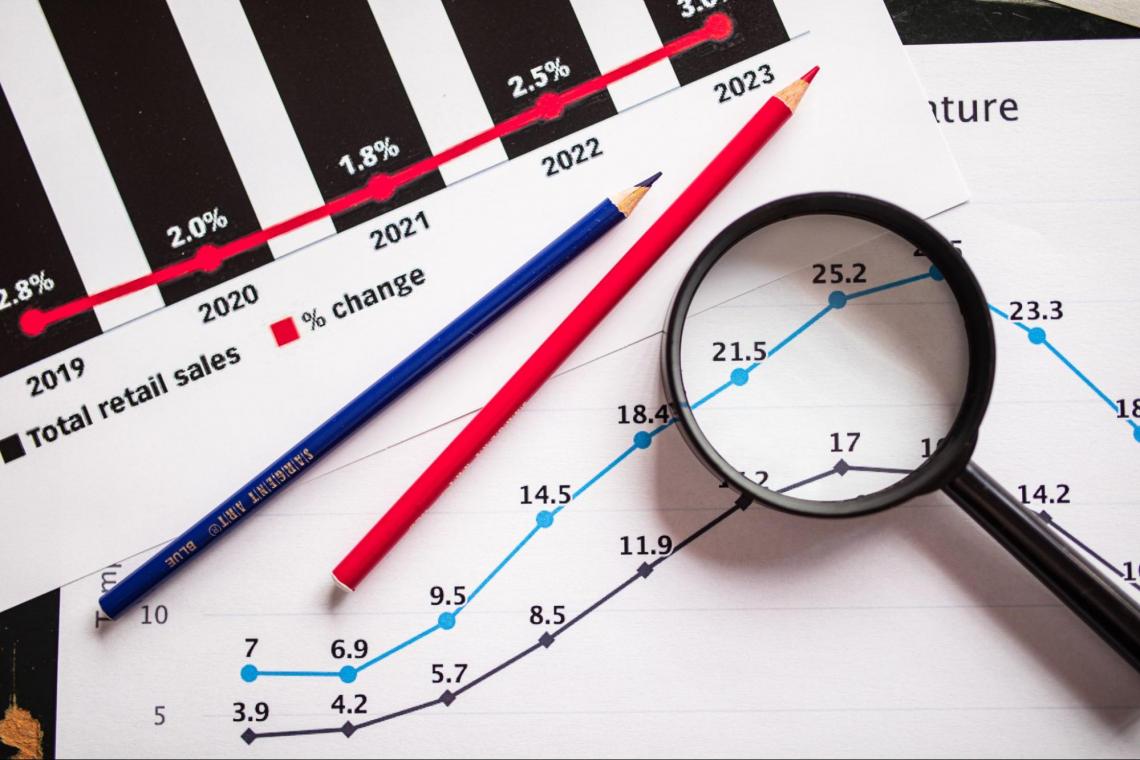Value
Is the cost of a specific good.
Value is the cost of a specific good. Assets are evaluated according to the possible economic gain they can produce.

This definition is valid in both daily life and the financial markets. For example, if investors believe a firm has the potential to produce a lot of cash flow in the future, its stock price will increase.
In everyday life, the worth of items is determined by how useful they will be over a specific time.
For instance, the estimated worth of yesterday's newspaper is practically zero. However, knowledge about the Fed's direction regarding monetary policy at its next meeting would be of great value. This is because everything relies on how much potential future worth that particular object can offer.
With that in mind, the perception of the estimated worth is extremely subjective. For instance, my grandpa may think his 1960 Ford Mustang may be worth $1 million.
However, we are most concerned with the general impression of worth when discussing trade and financial markets. That indicates agreement on a single estimate of an asset's price.

Market players do a valuation analysis—a formula that determines the fair worth of a specific asset—to reach that consensus.
Price changes due to supply and demand imbalances, whereas estimated worth, is an intrinsic quantity resulting from the asset's capacity to provide financial gain.
Economic dynamics like supply and demand are derived from what individuals currently need. An umbrella vendor, for example, might charge more for his goods on a wet day than he would on a bright one.
The same reasoning holds for financial markets. Consider owning stock in a firm whose CEO announced they have a game-changing product that will enable them to increase revenue by 20% in the next quarter.

As a result, the demand for it would rise and produce a dramatic spike in the share price. After all, people would appreciate it more. According to the law of supply and demand, the more a product is in demand, the more valuable it becomes and the higher its price will be.
The primary lesson from this dynamic is that while the price fluctuates, the inherent fundamentals of the assets remain constant.
The supply follows the same reasoning. More people will need a given commodity as it becomes scarcer, increasing the price.

The CEO's statement that they were merely creating a new product had no impact on our company's financial situation.
This supports the idea that an asset's price is the agreed price buyers and sellers are willing to exchange. Additionally, it is liable to change based on a broad perspective.
That leads us to valuation analysis and how it is performed.
How Is The Value Measured?
Value and price are two distinct attributes, but sometimes they can overlap. In valuation analysis, there are two main methods for assessing the fair value of an asset:
Each method aims to determine a number that stands for the worth of the good you are analyzing. However, the numbers differ in each respective method.

Comparable analysis, as its name implies, assesses estimated worth by referencing similar goods in the same context.
For instance, suppose you are trying to estimate a house. If you follow the comparable approach, you will discover how much the other houses with the same characteristics (size, etc.) in the same neighborhood are worth, and from then, you will base your calculation.
Similar holds for a car, a yacht, or any other asset. To perform comparable valuation, you need comparable stuff in the first place.
When talking about stocks, this subject is an important topic and is referred to by the jargon of comparable company analysis. It states that a company should trade at the identical multiples that its peers in the same industry with similar market caps.
If you are talking about a group of stocks, by compiling the market's perception, you can arrive at a range of worth for the companies operating within that industry. That is powerful. With that frame of values in hand, you can easily derive the price of the company you are analyzing.
Valuation by Comparable Companies
Two different metrics are compared, and their ratio determines how multiples function. This is predicated mainly on the idea that comparable businesses should trade at the same multiple.

Two separate measurements linked to the same notion are frequently combined in multiples. EBITDA and enterprise value, for instance, reflect how valuable a company is to its various stakeholders.
The time frame makes a difference. Enterprise worth considers many more assumptions than EBITDA because it is simultaneously composed of multiple cash flows.
Simply put, enterprise estimated worth is the worth of the company as viewed by the market, whereas EBITDA is a valuable indicator of how much cash the company can deliver.
Along with determining the intrinsic worth of a particular firm using the multiple of another, you may determine the stock's estimated price by evaluating that ratio.
For example, consider a scenario in which Company A is trading at 8.0 times EBITDA, whereas Company B is at 5.0 times EBITDA. Assume they both work in the same sector of the economy.

If the fundamentals of the two companies are comparable, Company B is less expensive than Company A and a better investment. But to be specific, you need to evaluate the fundamentals of both businesses accurately.
In that situation, intrinsic value analysis—which entails many more computations and assumptions—covers evaluating the fundamentals. For this reason, you assume that the companies' organizational structures are similar while analyzing comparable companies.
The primary function of valuation multiples is to determine the enterprise estimated worth of a business by comparing it to a peer, aside from deciding whether a stock is cheap or costly.
To do that, you first assume that the companies trade at the same multiple. Then, you multiply the company's EBITDA by the corresponding multiple.
For example, you discover a similar product for our business that sells at 8.0 EV/EBITDA. If you find out the company's EBITDA, you can multiply the multiple by that number to determine the enterprise's estimated worth.

Financial measures like EBITDA and enterprise value are considered while conducting valuation studies. Enterprise estimated worth is how much the entire company is worth after considering its prospects.
Because they provide the foundation of financial worth, cash flows are essential. Without cash, a business couldn't support its operations, pay its workers, and continue to exist.
Non-cash expenses are expenses deducted in the income statement that aren’t cash outflows, but according to accounting practices, they need to be deducted. Depreciation and amortization of long-term assets are the main ones.
It makes sense to utilize enterprise worth along with EBITDA as a multiple because it is an intrinsic valuation indicator that considers the firm's estimated worth and is accessible to all investors.
Enterprise estimated worth is also used in the multiples EV/Revenue and EV/EBIT. The reasoning underlying all three of these multiples is the same, despite slight differences in the calculations. It is to consider each investor's stake in the business.
The multiples that consider earnings, or the amount available to stock investors, are at the other end of the spectrum.
You combine them with market capitalization and earnings numbers, such as the market cap figure and earnings per share, since they represent the last component of the company's capital structure.
When comparing the current stock price to the company's earnings using multiples like P/E (price-to-earnings), the higher the number, the more costly the stock is.
You may take the earnings multiples and compare them to one another, just like you did with enterprise value multiples.
Let's say that both businesses trade at a P/E multiple of 5 and 10. If everything else were equal, the firm dealing at five times earnings would undoubtedly be less expensive than the one trading at 10, and it would also have a higher chance of rising in the estimated worth.
Multiples relationship with the company life cycle
The three stages of a company's life cycle are the foundation, growth stage, and maturity.

Companies will experience this cycle with various financial requirements and profitability profiles. For example, a startup's bottom line differs considerably from a mature corporation's.
As the company moves through its business cycle, the pattern for cash flow, profitability, and revenues changes. The business cycle is further divided into
- Foundation
- Early growth
- Mature growth
- Maturity
- Decline
Enterprise worth and EBITDA are two examples of metrics that are meant to be matched up using multiples. Each of these metrics works best when combined with specific life cycle stages. Let's take them one at a time.:
Foundation/Early Growth
The business will not turn over a profit during the foundation phase. Therefore, we shall treat the foundational and early growth stages as equivalent.

The business is losing money as it experiences its early stages of growth to establish itself in its industry and improve and change its business practices at that level.
This requires spending money because there will be significant investments in the workforce and capital.
Since the corporation does not retain its earnings, you need to consider a multiple that connects all of the company's stakeholders to a financial statistic, the top line in the company's earnings, which is revenue.
More specifically, because the corporation is using up capital, there will not be enough for all investors, which is why you need to consider all stakeholders.
They will evaluate the company's estimated worth based on its anticipated future performance.

You exclude net earnings from the calculation and examine a revenue multiple, such as enterprise estimated worth to revenue since net earnings are much more difficult to anticipate than revenue.
One key point to note is that the business must have a clear pattern of sales so we can forecast future figures.
Mature Growth
The revenue figures for the company will rise as it expands, and eventually, its earnings will become positive.

It is no longer required to evaluate the firm based solely on its revenues when it becomes profitable because investors will not have to wait until the future to have a claim on the earnings.
There is no need to assess the company based on its potential for sales because it is now in a lucrative cycle stage. Instead, use a metric that considers the operational structure, like EBITDA or EBIT.
EBITDA is a wise choice because it eliminates the impact of depreciation costs. Businesses make significant capital investments during their growth stage to expand their operations, and as a result, depreciation significantly impacts the net earnings figure.
The company's capital expenditures profile will primarily influence the decision between EBIT and EBITDA. However, an EBIT multiple could be more appropriate as it approaches a late growth stage as Capex tends to decline.
Maturity/Decline
Entering the maturity stage denotes the business's strong profitability profile, consistent cash flows, and rising earnings. When determining the company's worth for stakeholders, there is no need to forecast these numbers.

Multiples that consider these measures can be utilized, like the price-to-earnings ratio, because the company now has reliable earnings statistics. These multiples consider the company's capital structure when calculating profits after taxes.
One of the critical distinctions between the late development stage and the mature stage is the financial structure. The business may still owe substantial sums in interest on outstanding debt even while it is continuously growing and developing.
Similarly, the multiples for late growth (primarily EV/EBIT) will remove the interest costs the company will incur from the equation.
Once it settles into maturity, it will not be required to have large sums of debt. So, earnings multiples are more appropriate.

A reduction in profits distinguishes late maturity from decline. As a result, the corporation begins to lose market share, not for operational reasons but primarily because of a decline in revenue.
Once there, the business will have to evaluate the reasons behind the downturn. A strategy review is the main method used to carry it out.
In this context, a company's positioning about market factors, such as the entry of new competitors or new technology, is referred to as its strategy.
The assessment's key finding is that the company can still increase revenues if the operational factor is not to blame for the decline.
Discounted cash flow analysis
There are the so-called intrinsic value approaches, which run parallel to comparable valuation. However, in contrast to comparative analysis, which evaluates the company by examining its competitors, this type of computation aims to determine how much the business is worth based on its attributes.

The present value of an asset's expected future cash flows can be used to calculate its estimated worth, in this case, a corporation.
The discount rate used to arrive at the present estimated worth of those future cash flows is the company's cost of capital (WACC). Combine the values to determine the enterprise's estimated price once you obtain them.
The rate employed to draw a line between the current worth of money and its future estimated worth is known as the discount rate.
The discount’s significance will vary depending on the situation and its relevance to the subject of the analysis. Therefore, refer to it as the cost of capital in this situation.

Because WACC indicates the risk that the corporation is taking on, it is employed at the discount rate. Since it is a cost of capital number, it considers both equity and debt investors' capital costs.
In light of this, look for investments that will provide a better rate of return (IRR) than their WACC or a company that outperforms our investment.
The internal rate of return is the yield earned from an investment in any asset (IRR). For example, consider investing in a Treasury bill today for $95 and selling it a year from now for $100. The yield in this scenario would be 5%.
The internal rate of return in a firm value analysis is calculated using the share prices at the time of our entry and our exit from the business.

Future cash flows should be forecasted before using the discount rate to bring them to their present worth. Forecasting plays a significant role in the valuation process and necessitates a thorough grasp of business operations and investor relations.
When estimating future cash flows, assumptions should be made. Therefore, evaluating the drivers of business growth, operational KPIs, and financial sheet statistics is crucial to determine which and how many assumptions will be required.
Each of these will impact the cash flows. For instance, the cash flow statement will reflect changes to the balance sheet amounts, the revenue drivers will determine how much revenue will be left as net income, and operational measures will determine how much revenue will be generated by the business.
It is important to establish our assumptions because of their significance thoughtfully. There are several ways to get a specific number for each.

The next stage is to protect the company's future financial statements using the information in the assumptions.
It is important to have enough hypotheses to connect the financial statements and, most crucially, guarantee that the balance sheet is balanced to project the financial statements.
The main lesson from the forecasting process is that since it is an intrinsic value study, you establish your assumptions by considering the firm's characteristics.
FAQs

Value and price are two distinct units of measurement. A product's price is the dollar amount it is sold for. Value is what good is worth and has inherent significance.
The forces of supply and demand influence price since it is the amount at which people agree to sell a certain asset.
Value, on the other hand, is an inherent quality. This indicates that it is independent of outside factors like supply and demand.
We may profit by purchasing an asset that is worth more than is reflected in its price if the current price to be paid for it is below the value number since it reflects how much a given good is worth based on its intrinsic attributes.
Because they each have different roles, it is challenging to determine which is better. However, the comparable analysis may be completed rapidly, and because of this quality, experts frequently utilize it to generate estimates without going into great depth.
On the other hand, intrinsic valuation entails a thorough analysis of the company's financials, which requires a lot of time and effort. This study is carried out when the calculations need to be refined further, as would be the case in an M&A or buy-out transaction.




or Want to Sign up with your social account?